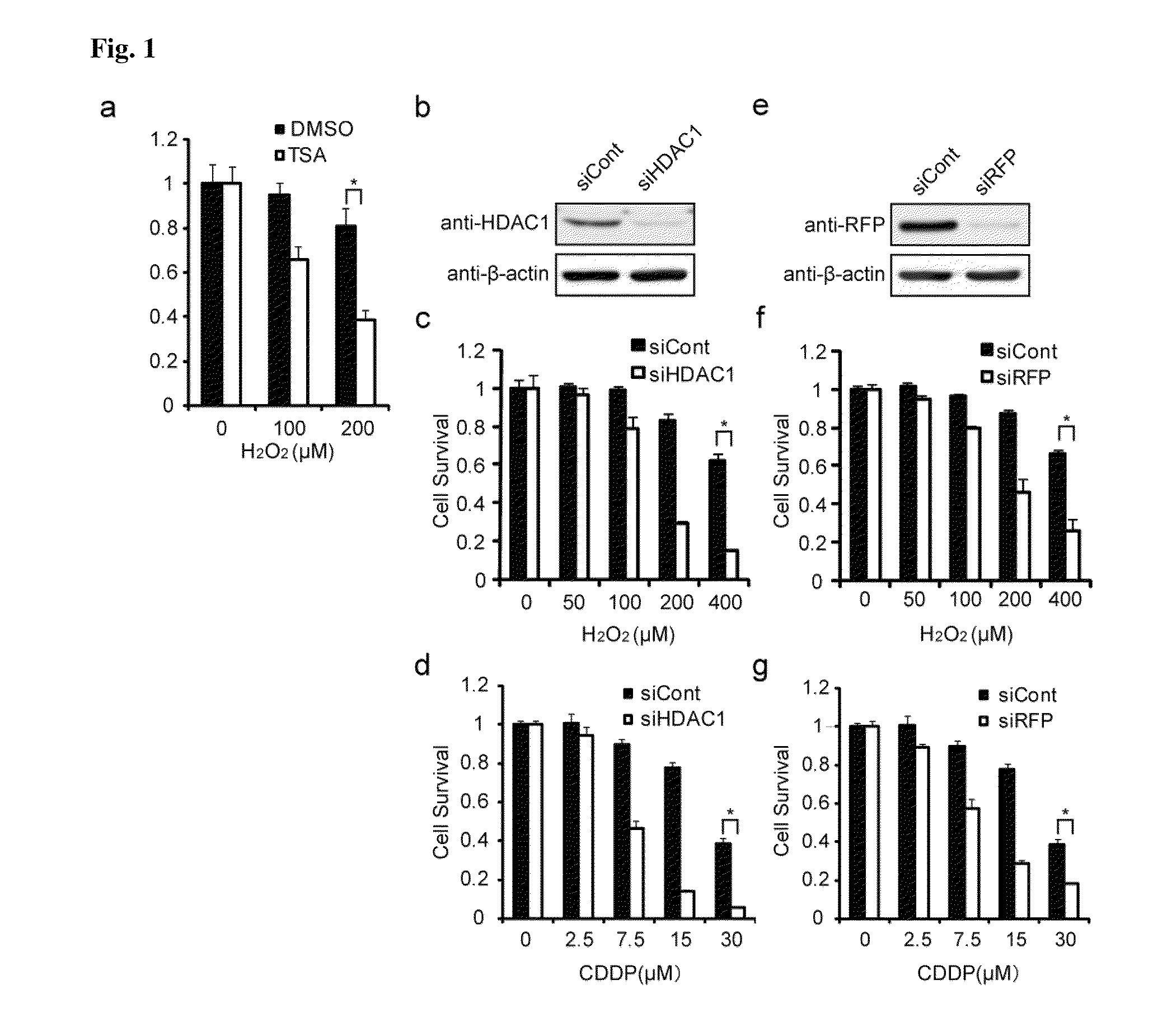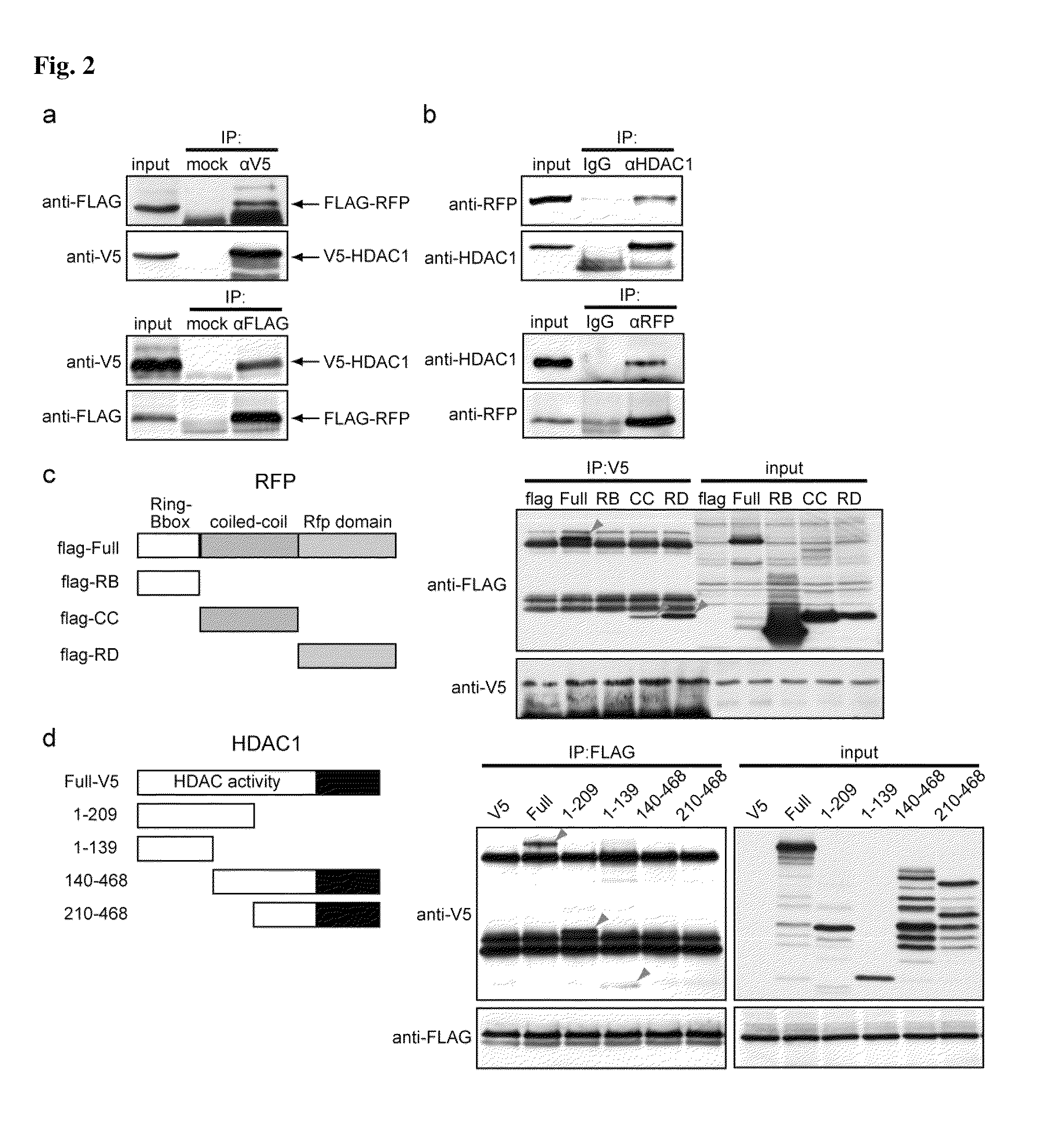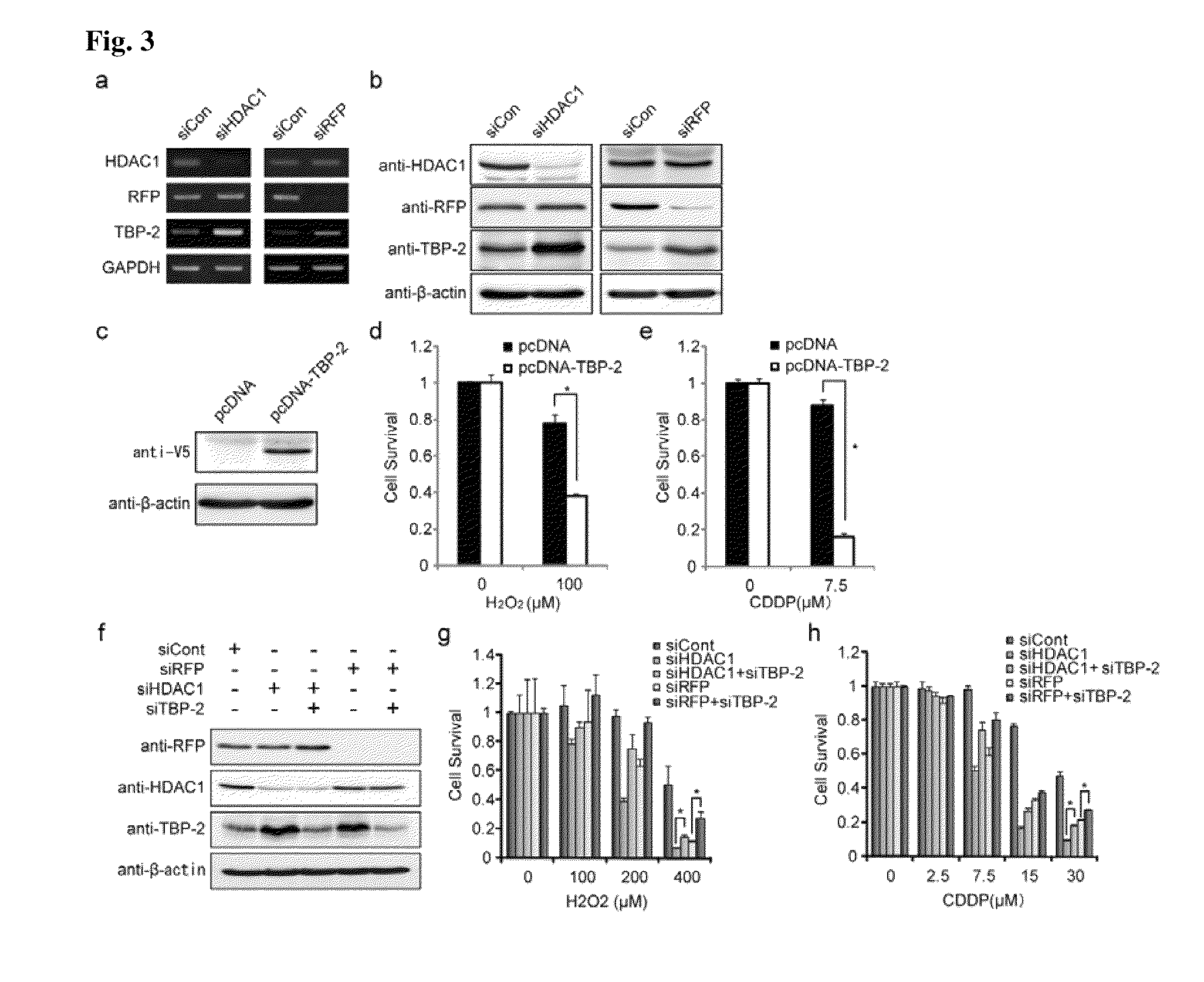Potentiator of activity of anti-cancer agent and use thereof, and biomarker for prediction of prognosis in cancer patient and use thereof
a cancer patient and potentiator of activity technology, applied in the direction of peptide sources, drug compositions, instruments, etc., can solve the problems that the molecular mechanisms of synergy induced by the addition of hdaci have not been fully understood, and achieve the effect of improving the action of anticancer drugs, reducing the amount of anticancer drugs, and improving clinical outcomes of therapy
- Summary
- Abstract
- Description
- Claims
- Application Information
AI Technical Summary
Benefits of technology
Problems solved by technology
Method used
Image
Examples
example
[0162]Division 1: expression of RFP is not observed: prognosis is good
[0163]Division 2: weak expression of RFP is observed: prognosis is relatively good
[0164]Division 3: moderate expression of RFP is observed: prognosis is relatively poor
[0165]Division 4: strong expression of RFP is observed: prognosis is poor
[0166]The number of evaluation divisions, and the expression amount of RFP and evaluation results related to each evaluation division are not necessarily limited to the above-mentioned examples, and they can be arbitrarily set through preliminary experiment, and the like. Note here that determination and evaluation in the present invention can be carried out automatically and mechanically without relying on the determination by persons skills in the art, for example, doctors and laboratory technicians.
[0167]The present invention further provides a reagent for estimating prognosis in cancer patients and a kit for estimating prognosis in cancer patients. The reagent of the presen...
examples
[0171]Based on the hypothesis that HDACi regulates the antioxidation mechanism in cells so as to allow cancer cells to be sensitive to an anticancer drug, the below-mentioned experiments are carried out.
1. Materials and Methods
(1) Plasmids
[0172]The pcDNA3-HDAC1-Flag was generously provided by Dr. Kawaguchi (Aichi prefectural colony, Japan). The full-length NF-YA, NF-YB, NF-YC, HDAC1, HDAC1 deletion fragments and TBP-2 cDNA were cloned into the pcDNA3.1 / V5-His-TOPO vector according to the manufacturer's instructions. The HDAC1 cDNA from pcDNA3.1 / V5-His-HDAC1 was inserted into the pcDNA3.1 / myc-His vector. The pFlag-RFP construct was described previously (reference 20). The RFP cDNA was inserted into the pEGFP-C1 vector.
(2) RNAi
[0173]HDAC1 siRNA was purchased from Dhamacon. RFP, TBP-2, NF-YC and control siRNAs were purchased from QIAGEN. The siRNAs were transfected using Lipofectoamine 2000 (Invitrogen) according to the manufacturer's instructions. For shRNA-mediated knockdown of RFP, ...
PUM
| Property | Measurement | Unit |
|---|---|---|
| volume | aaaaa | aaaaa |
| time | aaaaa | aaaaa |
| time | aaaaa | aaaaa |
Abstract
Description
Claims
Application Information
 Login to View More
Login to View More - R&D
- Intellectual Property
- Life Sciences
- Materials
- Tech Scout
- Unparalleled Data Quality
- Higher Quality Content
- 60% Fewer Hallucinations
Browse by: Latest US Patents, China's latest patents, Technical Efficacy Thesaurus, Application Domain, Technology Topic, Popular Technical Reports.
© 2025 PatSnap. All rights reserved.Legal|Privacy policy|Modern Slavery Act Transparency Statement|Sitemap|About US| Contact US: help@patsnap.com



